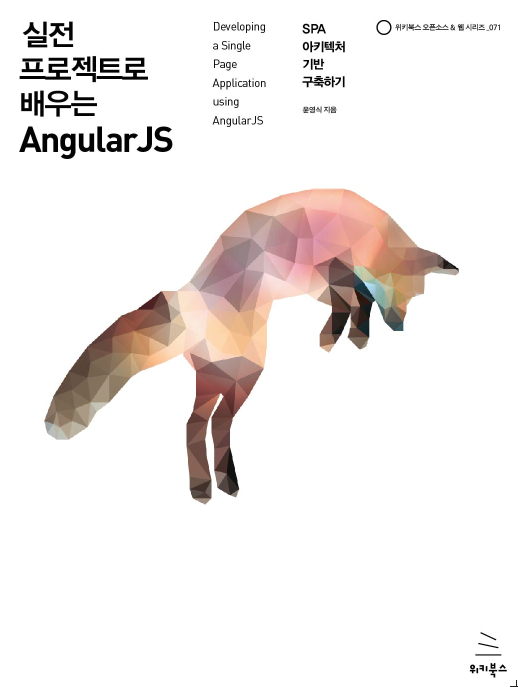스위프트 심화과정을 진행해 보자. 기본 문법을 배웠다면 프로젝트를 생성하고 이제 iOS 앱을 만들어 본다. 물론 앱개발시 기본 언어는 Object-C가 아니라 Swift이다.
프로토콜
- 특정 임무나 기능의 일부에 적합하도록 하기 위한 목적으로 작성된 메소드, 속성 등 요구사항에 대한 설계
- 인터페이스 : 속성 변수와 메소드 포함, 대부분이 인터페이스를 통해 다형성을 보장하는 방식으로 프로그래밍함
- 클래스에서 구현
protocol <pName> {
func <fName>() {
}
}
// 예
protocol Sample {
func execute(name: String) -> String
}
class SampleImpl : Sample {
func execute(name: String) -> String {
return "hi \(name)"
}
}
var s = SampleImpl()
s.execute("Peter")
- 여러 인터페이스 구현은 콤마(,)로 구분함
익스텐션 (Extension)
- 자바스크립트에서 prototype을 통한 객체 자체의 메소드 확장기능과 유사함
- 가급적 최상위 클래스 변경은 하지 말자
extension <eName> {
<확장 대상>
}
// 예
protocol NamedProtocol {
}
extension Int : NamedProtocol {
var description : String {
return "current value is \(self)"
}
func desc() -> String {
return "current value is \(self)"
}
func getFirstName(name: String) -> String {
return "\(self) name \(name)"
}
}
7.description
7.desc()
7.getFirstName("dowon")
앱 프레임워크
- 스토리 보드
+ 안드로이드의 XML 환경 설정과 유사함. 대신 비쥬얼하게 인터렉티브 UI 디자인이 가능하다
- iOS 4계층 프레임워크
+ Core OS -> Core Services -> Media -> Cocoa Touch
+ Cocoa Touch : 파운데이션 (Foundation), UIKit 등이 포함, 접두어 : NS - 파운데이션, UI - UIKit
+ Core Services : 코어 파운데이션
- Cocoa Framework
+ 맥북의 애플리케이션 개발
+ Cocoa Touch F/W은 iOS 앱 개발
+ 80% 가량이 Cocoa F/W 과 Cocoa Touch F/W 이 겹친다.
- Cocoa Touch F/W = Foundation F/W (NS*) + UIKit F/W (UI*)
스플래시
- 최초에 뜨는 스플래시 화면 제어하기
- AppDelegate.swift 파일이 앱의 LifeCycle을 관리한다?
- LaunchScreen.xib를 추가할 수 있다. => 프로젝트 Deployment Info의 Main Interface에서 최초 페이지를 선택할 수 있다.
네비케이션 뷰 컨트롤러
- 뷰를 스택으로 관리한다
- 기본이 되는 Root View Controller가 있다
- push 하면 스택에 쌓여 위에 노출되고, pop 하면 화면이 제거됨 : pushViewController
- 상단 메뉴 : Editor -> Embed in -> Navigation Controller를 추가한다
class NextView : UIViewController {
func nextView(ctrlName: String, transition: UIModalTransitionStyle) {
// 두번째 화면의 인스턴스를 만든다
var uvc: UIViewController = self.storyboard?.instantiateViewControllerWithIdentifier(ctrlName) as UIViewController
// 화면 전환 스타일을 지정한다
uvc.modalTransitionStyle = transition
// 화면을 호출한다
//self.presentViewController(uvc, animated: true, completion: nil)
self.navigationController?.pushViewController(uvc, animated: true)
}
func dismissView() {
//self.presentingViewController?.dismissViewControllerAnimated(true, completion: nil)
self.navigationController?.popViewControllerAnimated(true)
}
}
세그 (Segue)
- 화면 연결 처리 전용 객체
- Source : 자신이 있는 곳
- Destination : 목적지
- 연결 방법
+ 첫번째 화면(Source) 버튼을 Ctrl 누른 상태에서 두번째 화면(Destination)으로 드래그 앤 드롭을 하면 Segue 연결 팝업창이 나옴
+ 두번째 화면을 선택하고 오른쪽 상단의 마지막 아이콘 (->) 을 선택하고 Presenting Segues 에서 Present modally를 선택하고 첫번째 화면으로 드래그 앤 드롭해 연결
- 값 전달하기
+ 직접 전달 : 두번째 화면 컨트롤러로 캐스팅
+ segue를 연결해서 전달 : prepareForSegue 재정의 내역에 segue. destinationViewController를 두번째 화면 컨트롤러로 캐스팅
// 첫번째 화면 컨트롤러
class FirstViewController : UIViewController {
// source 화면에서 버튼을 추가하고 destination 화면으로 이동할 때 값을 전달하는 방법
@IBAction func nextPresentation(sender: AnyObject) {
var uvc : SecondViewController = self.storyboard?.instantiateViewControllerWithIdentifier("secondViewController") as SecondViewController
uvc.param = "Direct Parameter"
self.presentViewController(uvc, animated: true, completion: nil)
}
// segue로 연결해서 값을 전달하는 경우
override func prepareForSegue(segue: UIStoryboardSegue, sender: AnyObject?) {
var uvc : SecondViewController = segue.destinationViewController as SecondViewController
uvc.param = "Segue Parameter"
}
}
// 두번째 화면 컨트롤러
class SecondViewController : UIViewController {
var param : String = ""
override func viewDidLoad() {
NSLog("Excute Second View Loaded value is %@", param)
}
}
- 세그를 커스터마이징할 수 있다. : 이동 시간, 이동 효과등을 설정할 수 있다
+ 스토리 보드에서 custom segue를 선택하고 CustomSegue를 선택
import UIKit
// 반드시 상속
class CustomSegue : UIStoryboardSegue {
// 반드시 구현
override func perform() {
let src = self.sourceViewController as UIViewController
let dest = self.destinationViewController as UIViewController
UIView.transitionFromView(src.view, toView: dest.view, duration: 1.0, options: UIViewAnimationOptions.TransitionCurlDown, completion: nil)
}
}
접두어
- NS : 파운데이션
- CF : Core 파운데이션
- IB : @IBOutlet 같은 어노테이션이 컨트롤러에 있으면 스토리보드에서 자동 인식하는 것이다.
UIAlertView
- iOS 메세지 전달은 델리게이트 패턴을 쓴다
- 이벤트 처리 담당자가 따로 있어서 발생시 현재 떠 있는 창에 알려주는 구조
- UIAlertViewDelegate 프로토콜(protocol)을 구현하면 Alert View Controller를 제어할 수 있다
참조
'Languages > Go' 카테고리의 다른 글
| [Swift] 스위프트 배우기 - 1일차 (0) | 2014.11.26 |
|---|



